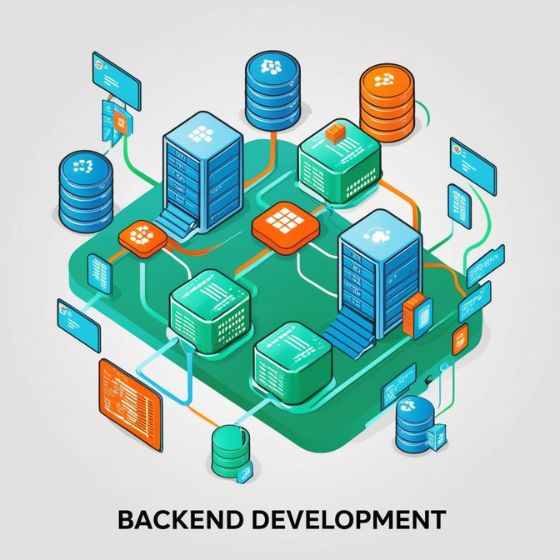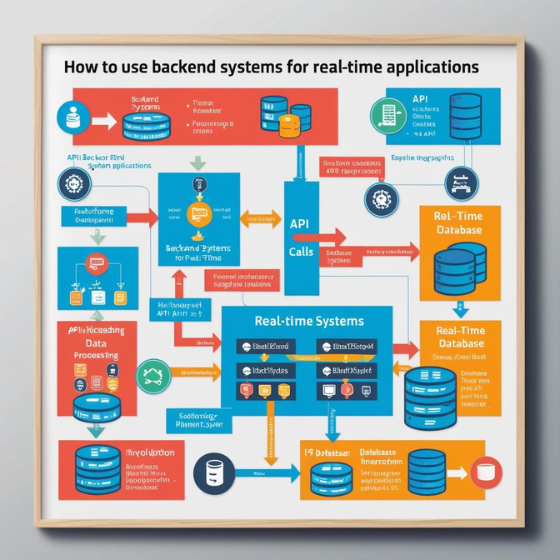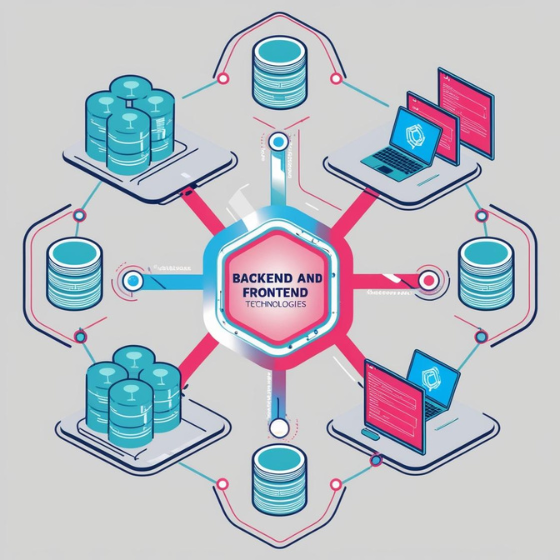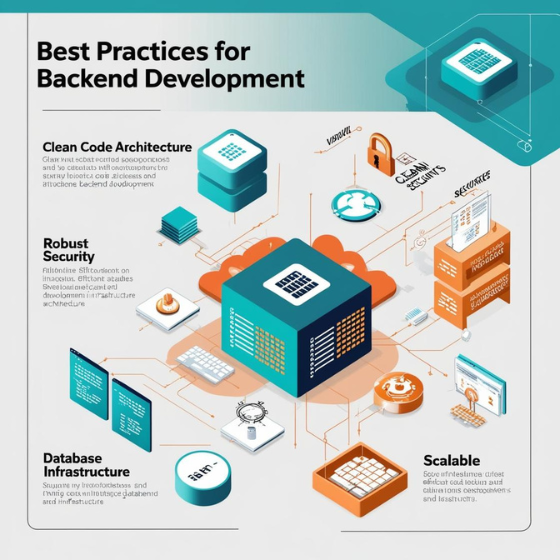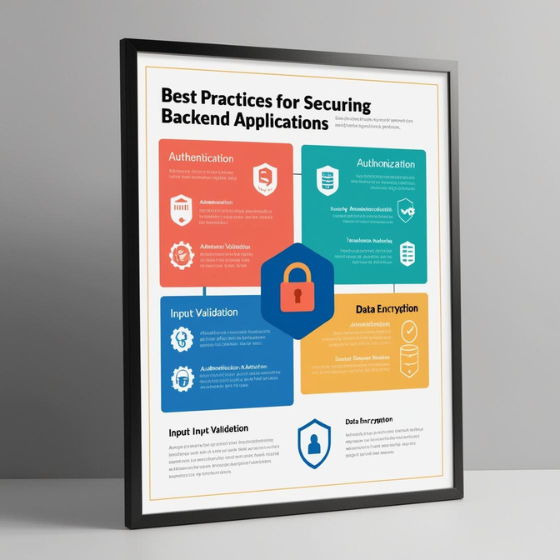Understanding Backend Development: The Backbone of Your Web and App Success
Did you know that 77% of users abandon websites due to poor performance? When it comes to web development, we often focus on the front-end, the visible part of the application. However, the backend is the real engine driving your website or app. Without a solid backend, even the most beautifully designed user interface can fail to deliver a seamless experience.
In this blog, we’ll dive into understanding backend development, why it’s crucial for your business, and how it directly impacts your site’s speed, scalability, and security. Whether you’re starting a new project or optimizing your existing systems, this guide will help you understand the importance of backend development and its role in building powerful, reliable, and secure web applications.
What Is Backend Development?
Backend development refers to the server-side part of a web application or website. While the front-end focuses on the user interface (UI) and user experience (UX), the backend is responsible for managing and processing the data that powers the front-end.
The backend involves three primary components:
- Servers: Handle incoming requests from users and send the requested data.
- Databases: Store and manage all the data used by the website or app.
- APIs (Application Programming Interfaces): Allow different systems to communicate and share data.
Together, these components ensure that your site or app functions properly by handling data processing, security, and user interactions.
Why Is Backend Development So Important?
While the front-end is essential for visual appeal, understanding backend development is key to creating fast, secure, and scalable applications. Here’s why:
1. Speed and Performance
A fast website or app is crucial for retaining users. A poorly designed backend can slow down your website, causing delays when loading pages or fetching data. This can lead to a frustrating user experience, and as mentioned earlier, slow websites result in higher abandonment rates.
A well-optimized backend can improve performance, ensure fast loading times, and help deliver a better user experience.
2. Scalability
As your business grows, your website’s traffic and data will increase as well. A scalable backend allows your app or site to handle this growing demand without slowing down. Whether it’s adding more users, more data, or more features, a robust backend ensures that your platform can grow with your business.
3. Security
Backend development is responsible for protecting sensitive data, such as user information, financial data, and proprietary content. A secure backend involves encryption, authentication, and authorization, ensuring that only authorized users can access sensitive data.
4. Flexibility and Customization
A strong backend allows you to build custom features tailored to your business. Whether it’s creating a unique user dashboard or implementing a specific order management system, the backend allows you to make your platform fit your exact needs.
5. System Integration
Today, most businesses rely on multiple systems and platforms to function smoothly. A solid backend facilitates seamless integration with third-party tools, payment systems, and APIs, creating a more unified and efficient experience for users and businesses alike.
Core Technologies in Backend Development
Understanding backend development means familiarizing yourself with the technologies that make it all possible. Here are some of the essential tools and frameworks that backend developers use:
1. Programming Languages
Backend developers use programming languages to write the server-side code that powers your application. Some common backend languages include:
- Python: A user-friendly language that is versatile and widely used for building web applications.
- Java: Known for its stability and scalability, often used for large enterprise applications.
- PHP: Popular for server-side scripting and building dynamic websites, especially with platforms like WordPress.
- Ruby: Known for its clean code and ease of use, Ruby is often paired with Ruby on Rails for rapid web development.
- Node.js: JavaScript on the server side, Node.js enables developers to use the same language for both the front-end and backend.
2. Databases
Databases are essential for storing and retrieving data efficiently. There are two main types:
- Relational Databases (SQL): These use tables to store structured data and allow complex queries. Examples include MySQL and PostgreSQL.
- NoSQL Databases: These are designed to store unstructured data, making them ideal for scalability. MongoDB and Cassandra are popular NoSQL options.
3. Web Servers
Web servers manage incoming traffic and deliver content to users. Some commonly used web servers include:
- Apache: Open-source and highly configurable, Apache is one of the most widely used web servers.
- Nginx: Known for its speed and ability to handle high traffic loads, Nginx is often used for reverse proxying and serving static content.
4. Backend Frameworks
Frameworks help developers build applications faster by providing pre-written code for common tasks. Some popular backend frameworks include:
- Django (Python): A high-level framework that promotes rapid development and clean, pragmatic design.
- Spring (Java): A comprehensive framework used for creating enterprise-level applications.
- Laravel (PHP): A robust PHP framework that offers a rich set of features and a streamlined development process.
- Express (Node.js): A minimal and flexible Node.js framework for building web applications.
Real-World Examples of Backend Development
Let’s explore how backend development affects real businesses and applications:
1. E-commerce Websites
An e-commerce website relies heavily on its backend to manage product listings, handle user authentication, process payments, and manage customer data. A slow or inefficient backend could lead to abandoned carts and lost sales. A well-optimized backend ensures smooth transactions, fast product searches, and secure payment processing, leading to a better overall user experience.
2. Social Media Platforms
Social media apps require real-time data processing for things like posting content, liking posts, and sending messages. The backend also stores users’ personal data securely. A poorly designed backend can result in slow page loads, delayed notifications, or even security breaches. Efficient backend development ensures that everything from notifications to profile management is seamless.
3. Healthcare Platforms
In healthcare, the backend stores sensitive patient data and ensures secure communication between systems. Backend developers play a critical role in creating HIPAA-compliant systems that handle everything from appointment scheduling to electronic health records (EHR). A strong backend ensures patient data is secure, while offering healthcare providers an intuitive platform to manage their workflow.
How Sodio Can Help with Your Backend Development
At Sodio, we specialize in crafting custom backend solutions that ensure your application runs smoothly, securely, and at scale. Our team of experienced developers works closely with you to design and implement the ideal backend architecture for your project.
Whether you need:
- Custom Backend Development tailored to your specific business needs
- API Integration with third-party tools or services
- Database Design and Optimization for fast, efficient data processing
- Cloud Solutions to scale your application effortlessly
Sodio has the expertise to deliver high-quality backend systems that will enhance your website’s performance and security.
Contact us today to learn how we can help you build a backend solution that drives your business forward.
Conclusion: The Power of Backend Development
In conclusion, understanding backend development is crucial for building successful web applications. A well-structured backend ensures that your website or app is fast, secure, scalable, and capable of handling user needs efficiently. Investing in backend development is an investment in the future growth of your business.
If you want to take your project to the next level, we invite you to explore our backend development services or get in touch with our experts for a consultation.
